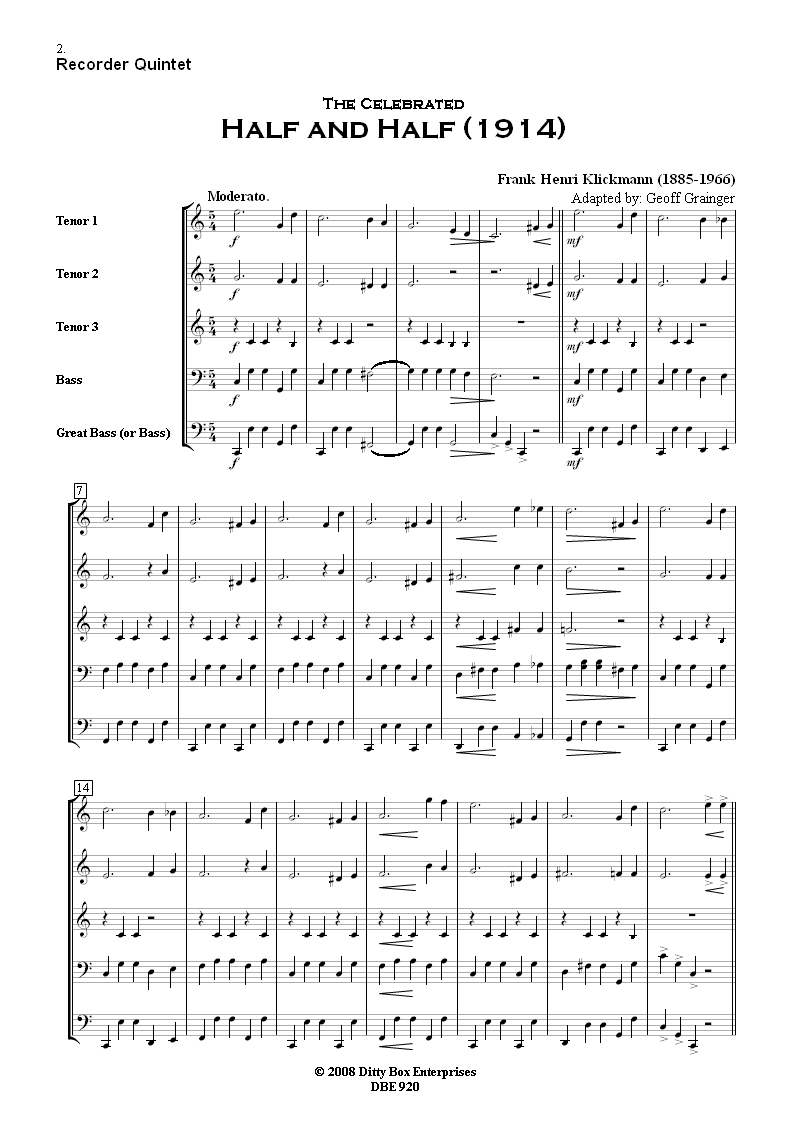Half and Half (1914)
Tango
Tango
Last updated: 28.01.22

| Composer: | F.H. Klickmann | Suppliers: |  |
| Editor: | Geoff Grainger | Quintet | T/T/T/B/GB(B) |
| Publisher: | Ditty Box Enterprises | Publication: | DBE 920 |
| Add to cart: |  |
Length: approx. 2¾ mins.
Klickmann's Half and Half celebrates the short-lived 1914 dance craze and is said to have been invented by the illustrious Vernon Castle in 1912. The dance was so-called because humorously the dancer's costume was half male and half female (e.g. tuxedo and top-hat on one side and ball-gown on the other) with the effect of appearing to dance with one's self. It was one of a handful of such pieces with 5/4 time signatures then published which include:
Drawing Room Echoes (1914) also by Klickmann,
Society's Pet (1914) by Malvin Franklin and
DBE 1048: Castles' Half and Half (1914) by James Reese Europe and Ford T. Dabney
With the exception of the Europe/Dabney version, they employ the device of sub-dividing the bars with vertical dotted lines into 3/4 +2/4 . Educationally this may be not a bad way to get a grip on the complexities of the 5/4 world but this editor holds that that 5/4 should be played straight avoiding the beginner's tendency to stretch a 2/4 into a 3/4; and thus possibly making a jig out of it! Whatever, this is a lovely, melodic, haunting and elegant piece in ABACA form with a 4-bar introduction. Particular attention should be paid to the changes of pace.
Half and Half was published by Frank K. Root and Co., Chicago, Illinois, USA.
Scored Moderato, Cantabile and Con anima , tempi of 150-240 crotchets/min. seem about right.
| Instruments | Performer |
|---|
| DBE MP3 Sample | ||
 |
T/T/T/B/GB(B) | Midi Ragtime Recorder Ens. |

